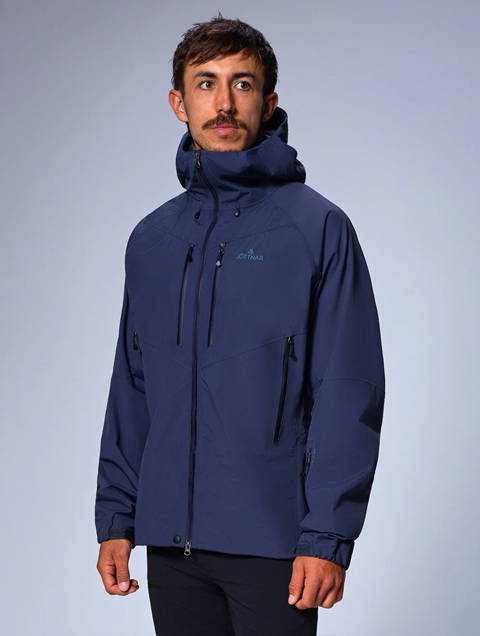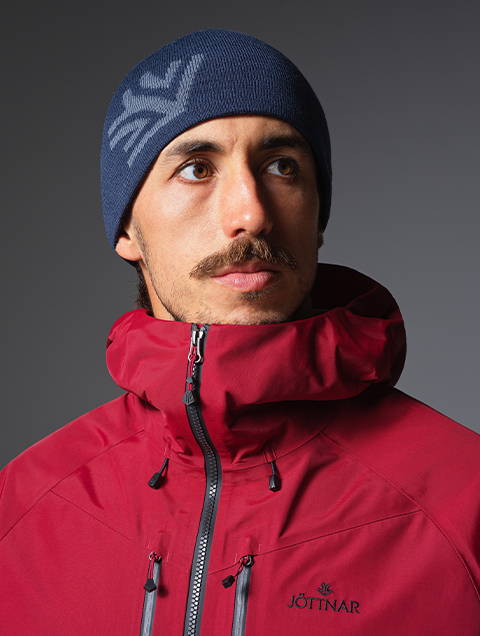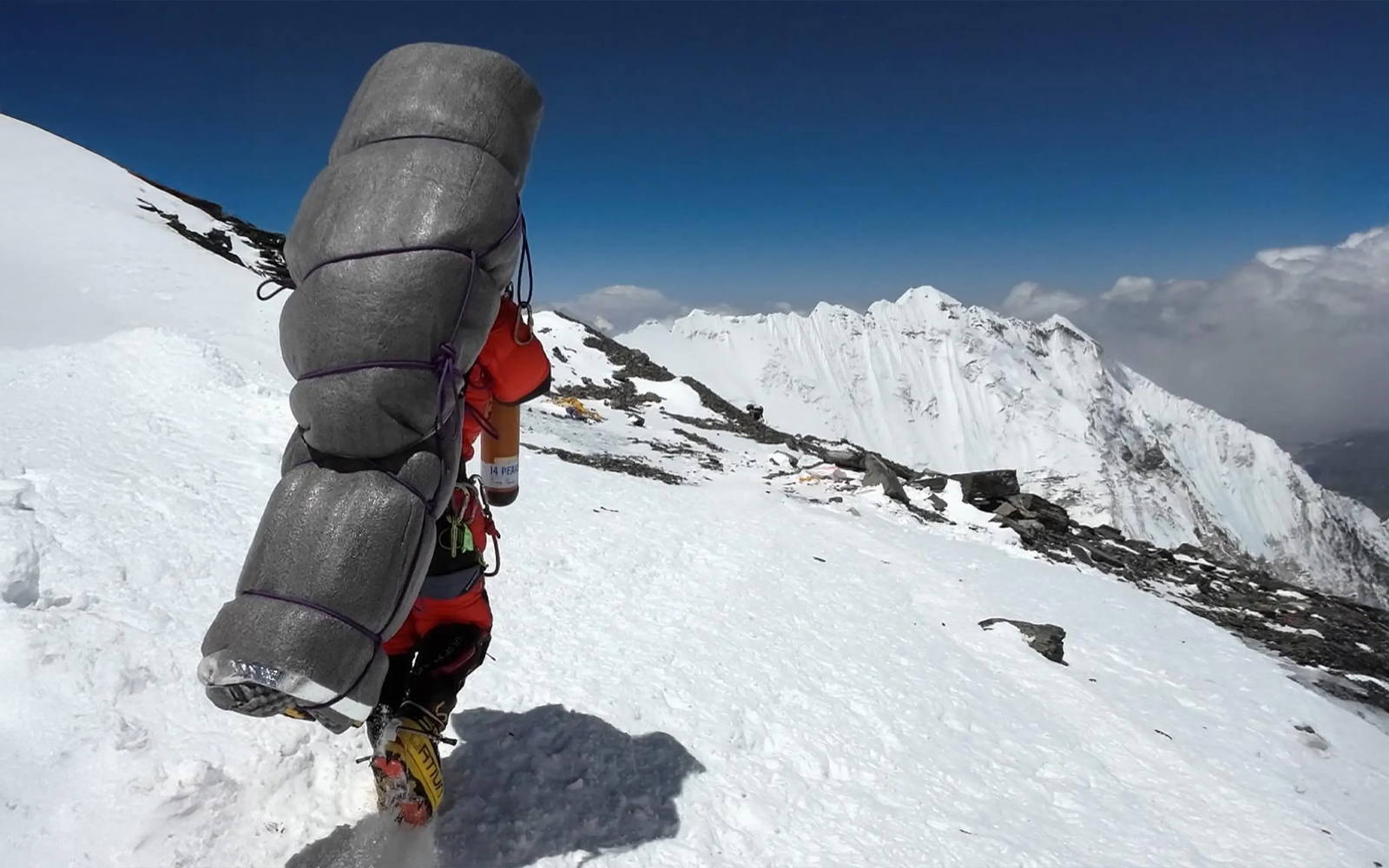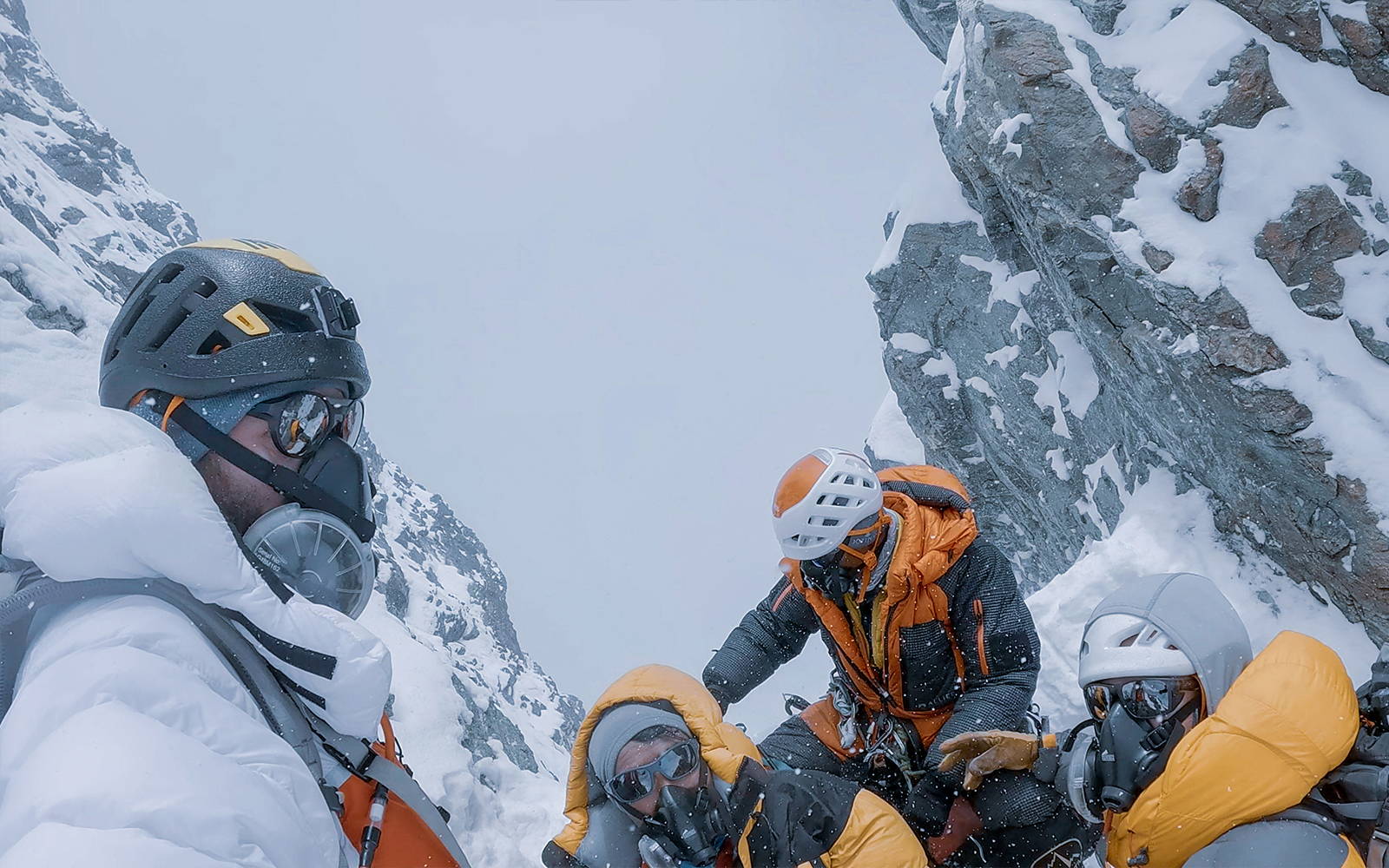
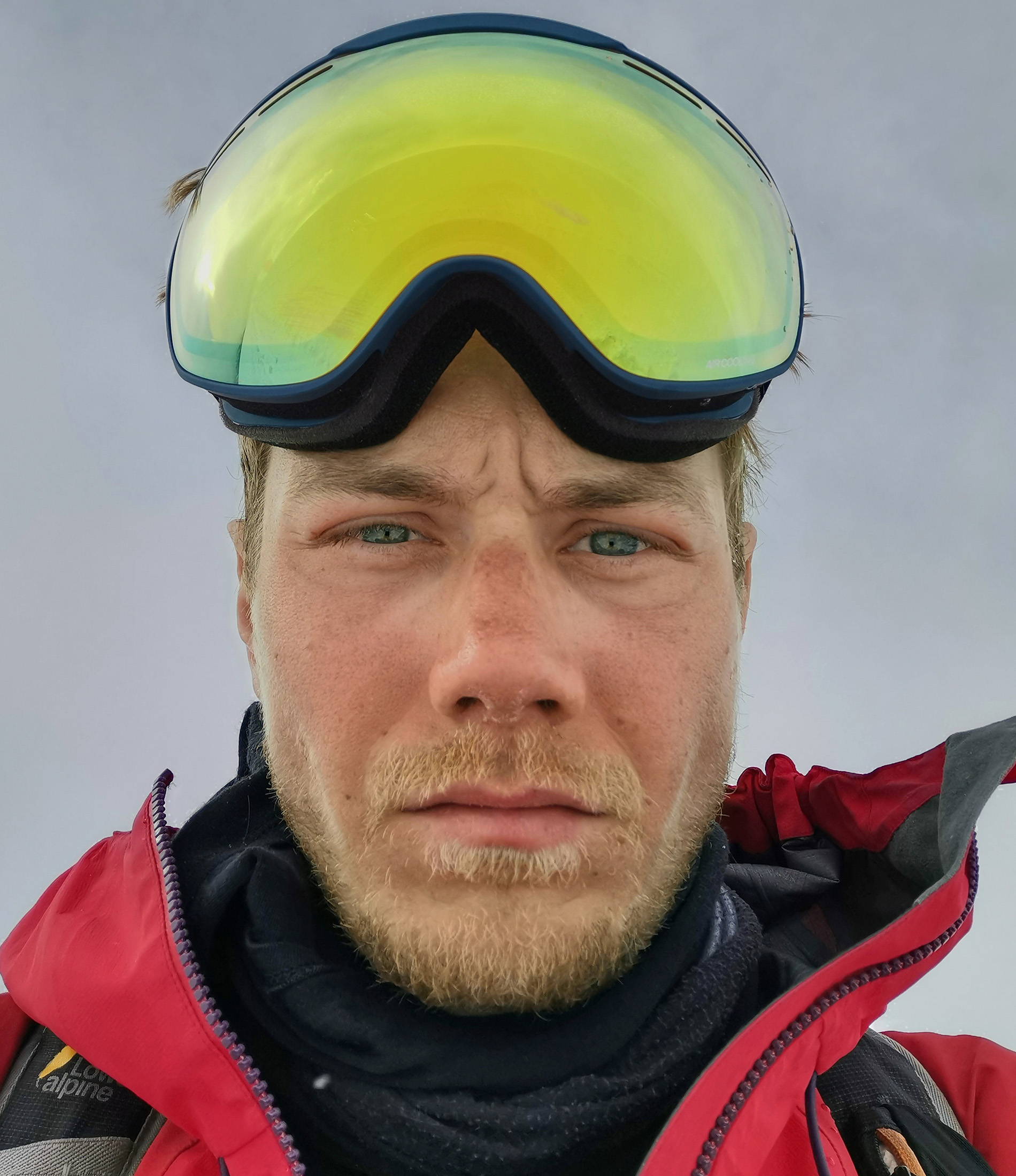
A British adventurer, speaker, and expedition leader, Oli France has spent over a decade navigating the world's most remote and hostile environments.
Oli attempts to traverse the length of Lake Baikal, solo: March 2020.
If someone had offered to drill a hole in my head to relieve the pressure, I’d have said ‘Yes,’ in an instant.
It all started with a camel burger in Somalia. At least, that was my conclusion as I lay in a UK hospital bed a week later. I had contracted a dire concoction of illnesses. First, shigella, which causes fever and dysentery. Then meningitis, which made me feel like my brain might explode through my skull. I have never been so ill, and for a time I worried I might be fatally unwell.


It was early December 2019. I was forbidden to leave my room, and anyone who entered was entirely clad in protective clothing. My mind could barely focus on anything but the pain within it. I could however hear a radio from the corridor, and rumours of a new disease emerging in the Far East. Then, a cold draft from the window reminded me of Siberia.
In three months, I had planned to embark on my most demanding expedition yet. My goal was to cross the full length of Lake Baikal - the world’s largest freshwater lake - which sits in the heart of Russia. Measuring 400 miles, it is forty times the length of England’s largest lake. Each winter, as temperatures plummet below minus 40°C, a thick slab of surface ice encrusts the mile-deep lake.
Like eating dubious burgers, it’s a journey which poses many risks. The ice, while one metre thick in parts, is constantly moving, cracking, and shuddering. This movement leaves swathes of ice rubble as big as cars. There can be massive open-water channels, and jagged four-metre-high pressure ridges. Thermal springs create treacherously thin ice in parts, and some remote sections on the lake are one-hundred miles from civilisation. Gale force winds are commonly channelled along Baikal by the surrounding mountains, bringing blizzards and whiteouts.
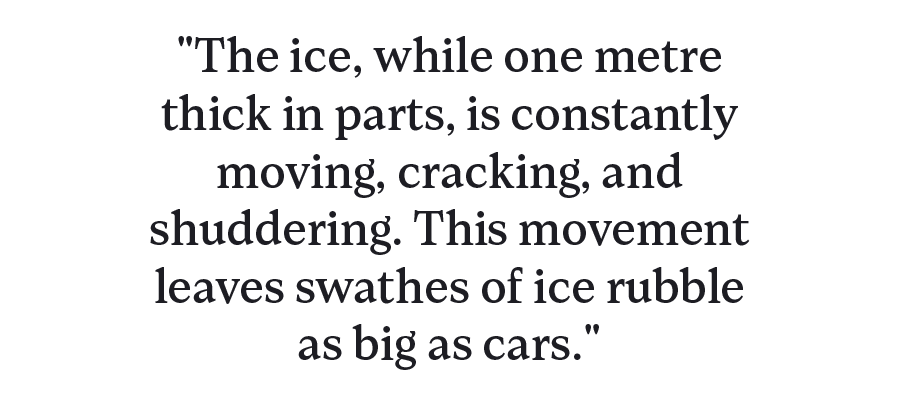

Though inhospitable, Lake Baikal holds a mystical beauty scarcely seen anywhere else. Its crystalline water hardens in magical patterns of cracks, spirals, and bubbles. Local shamans view Baikal as a living beast, which thunders and roars. Such a place - with bone-chilling cold, immense scale, and untold dangers wrapped in local mythology - commands a deep respect. Only the foolhardy would travel there unprepared. History holds countless stories of people meeting an icy grave in the black depths of Lake Baikal.
My legs looked thin and weak when I returned home from hospital. I had shed two stone, lost much of my fitness, and still endured crushing headaches and shallow lungs. More bad news compounded my physical decline. I learned that my trusted expedition partner was dropping out of the trip, and a crucial source of funding had fallen through. As my mind ebbed from its haze, my focus remained gripped by Lake Baikal. I could not let it go.

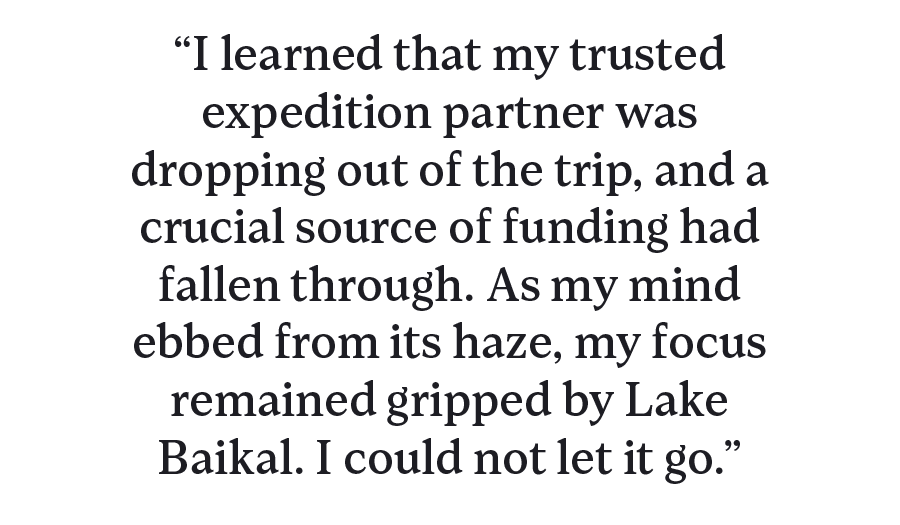
Going solo brought doubtful questions from loved ones, but a whole new tier of preparation. From satellite phones, self - rescue ice picks, and piles of cash for emergency Russian helicopters, to dark breathless evenings hauling a sled around a wet field in northern England. If I was going to do this, I could not afford to leave anything to chance.
Three months later in early March 2020, funding eventually secured, kit prepared, and body primed for the challenge, I was deposited on the frozen lakeshore in the bleak Siberian village of Kultuk. It would be sixteen days before my feet would touch solid earth again. Stepping out onto the ice was a sight I had imagined countless times before. I was entrusting my life to the merciless forces of nature.
For months, nightmares plagued me in the small hours of the night. Each vision had me breaking through the ice never to be seen again. Alone on this expedition, I would have nobody watching my back, nobody to haul me free. Only a rapid self - rescue could prevent frostbite, or something much worse.
Though alone, I did have the company of a 60kg sled. This contained everything I needed to support my journey. On bare ice, I would use screw-in spikes in my boots for traction. On the snow, I’d skim along on skis. I planned for my days to be long, bordered by dawn and dusk, and to spend my nights camped on the ice itself.
On day one, adrenaline helped me to cover almost thirty miles. It was further than planned, and I felt a burst of confidence. As I checked my GPS position that night, however, it barely looked like I’d started. The sheer scale of Lake Baikal was beginning to dawn on me. My route would traverse the western flank of the lake. I would cut from cape to cape, rather than tacking along the deep lakeside bays. Often, I would be miles from shore. In the south, it is not unusual to see cars, skaters, even hovercraft out on the ice. In the northern half of the lake, however, there is almost no civilisation.




I set my second camp a mile from the town of Listvyanka, securing it with a dozen ice screws. A bright day had given me false confidence: at midnight, a gale force wind erupted, scouring the ice like a freight train. My tent was pummelled. I lay within it, my body now a crucial part of its structure. As spindrift accumulated inside the porch, the tent canvas bellowed, and the poles began to bend. It was a mistake I would not make twice. In the evenings that followed, I would not rest until I had built a protective snow wall around my tent.
As the days ticked by, I averaged roughly a marathon each day, and carved out an efficient routine. I would journey for 12 hours, taking momentary breaks to refuel and keep up my 6000 - calorie daily diet. Evenings were spent melting snow, rehydrating meals, sending progress messages, and planning for the day ahead. While my snow walls had dealt with the wind, it was the ice which now kept me awake at night. Sundown always brought a sudden twenty - degree temperature drop. The ice always responded with an orchestra of bangs and echoes. Many restless nights were spent praying not to be swallowed by the lake.
After seven days I approached Olkhon Island, a 45 - mile landmass marking the halfway point. By now, the soles of my feet throbbed, my achilles were swollen, and my hips and back ached from the strain of hauling the sled. My body was in a period of adaptation, from that of a globe - trotting expedition leader specialising in hot and hostile places, to one of frozen sled - hauling soloist.


The small towns near Olkhon island provide the last easy escape routes off the Lake. There was only emptiness for the next two - hundred miles. I got some rare bars of phone signal and decided to video call my wife, Emma, before leaving civilisation behind again. What happened next would flip my expedition on its head:

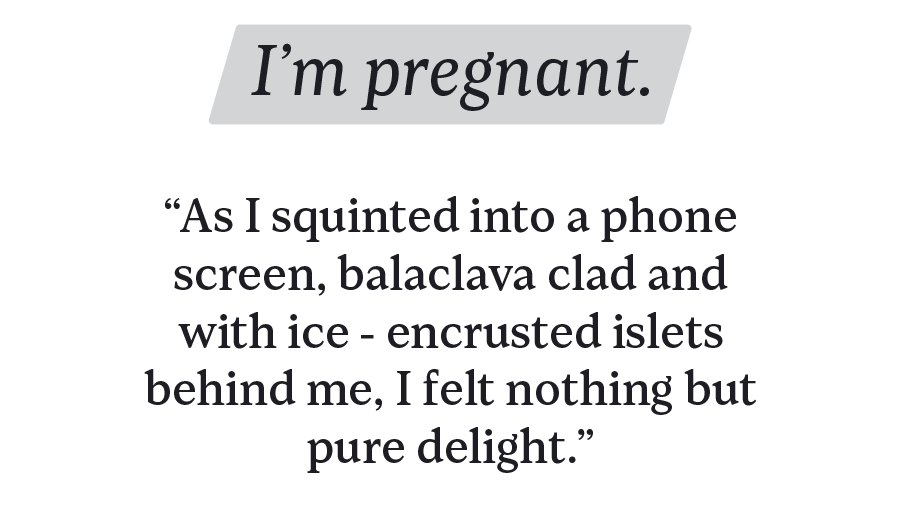
‘I’m pregnant.’
As I squinted into a phone screen, balaclava clad and with ice-encrusted islets behind me, I felt nothing but pure delight. My wife stared back from our bed where she’d just woken. An instant pull of responsibility overcame me. I had an urge to be back at home with Emma. But as my phone signal faltered, I was back on my own in freezing Siberia and feeling a very long way from home.
That night, I set camp by a small island, thinking it might shield the wind. It was a bad decision. Overnight, my tent was rocked by terrifying booms, cracks and shudders, almost every thirty seconds for hours on end. I desperately feared that the ice below me might become rubble at any moment, and I’d become another of Baikal’s victims. At 2am, my sense of danger peaked. I had to move, right now.
I swept everything into my sled and threw on my warmest clothes. I was ready to go, but where? South was a faint glimmer of the last village, a final gateway to home. I was going to have a baby! Then I looked north, to a black emptiness pitted with broken ice and deepening snow. In that moment, I decided to do it for the little one.


With every northward mile, the temperature dropped and the snow deepened. Taller mountains gave momentum to brutal blizzards. After a big 33 - mile day, my progress began to falter. In its remotest expanse, Lake Baikal almost pushed me to breaking point.
The weather was strangely warm, just above zero, leaving the snow heavy and wet. Gales brought a thick blizzard across the lake, and my hefty sled which once skimmed across the bare ice, now acted like an anchor in my wake. My pace slowed to one mile an hour as my skis harboured large clumps of snow and had to be constantly cleared. Moving forward challenged my sore body and lonely mind. I felt it might take an eternity to cover the remaining 75 miles.
For a second, I remembered my emergency helicopter fund, and then I shook my head. This is what I had signed up for, and I had already come so far. Suffering is an inevitable component of challenging expeditions. It is one of the things we seek, but we never quite know when it will come, and it has a habit of arriving in our weaker moments. Depleted, I trekked on.
Four days later, as smoke and golden lights signalled civilisation, I knew that my journey was almost complete. I had held many doubts and fears about this expedition. As a polar novice my relentless planning had paid off. I called my wife to share that I was nearing Nizhneangarsk at Baikal’s northern tip. I was soon to become one of very few people to trek the full length of Lake Baikal solo, and I had done so four days quicker than I had planned.
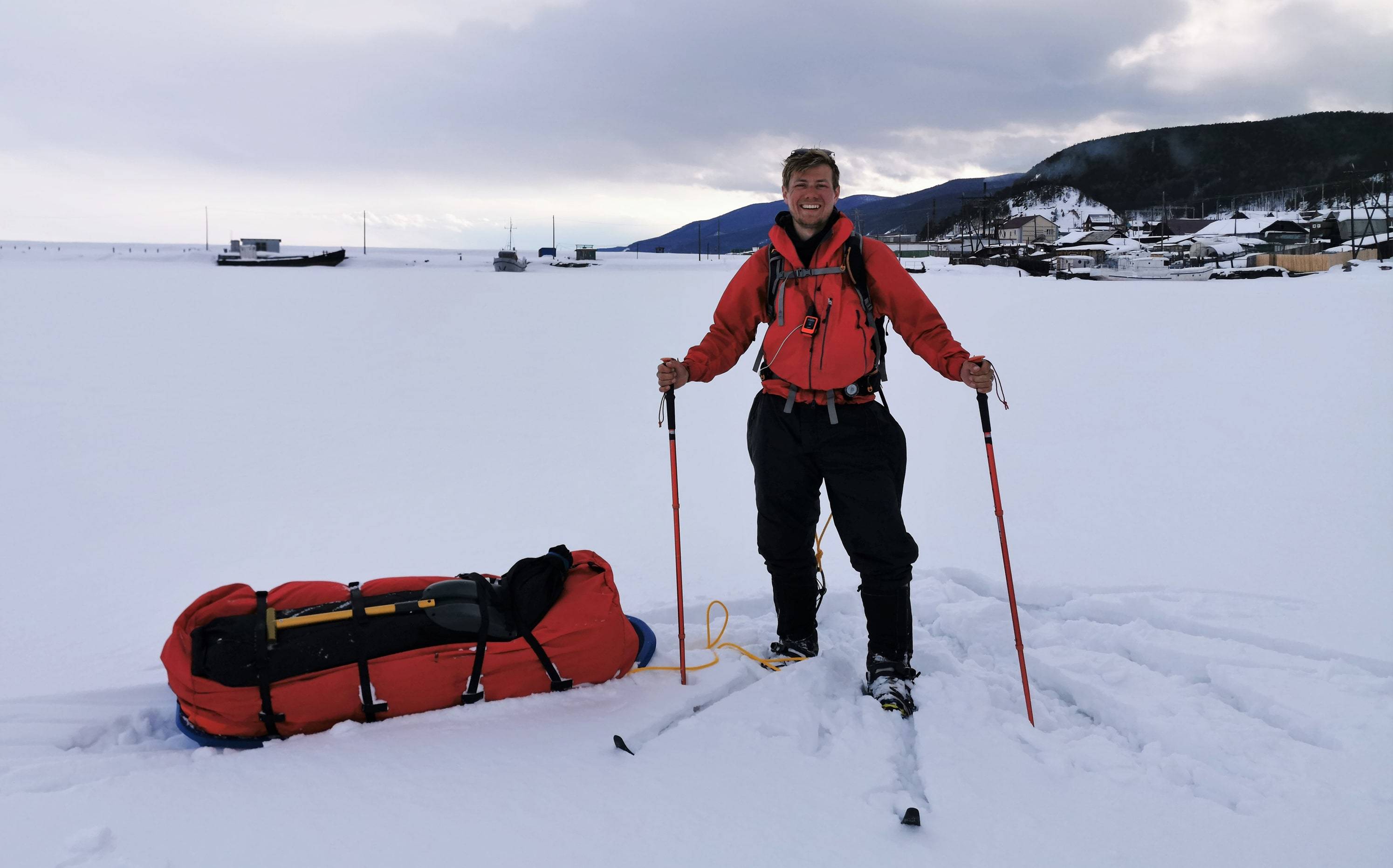
At the end of our short call, Emma revealed the news that Covid - 19 was rapidly seizing the world and there were only a few days left to get out of Russia. I needed no additional excuse to race home. I landed back in the UK on one of the last flights out of Russia, and on the first day of the UK’s lockdown.
As I travelled home from Siberia, I wondered how my life was about to change. My twenties had been filled with wild expeditions to high - risk places. In a few months I would turn thirty and would become a dad to a small child. Was this the end?
As I write this, five years on, I know the answer. Time would bring bolder dreams and wilder schemes. Between the expeditions which followed though, time would also force me to face one of the hardest pursuits of all: the quest to find adventure, and meaning, in the valleys as much as those lofty peaks in our mind.
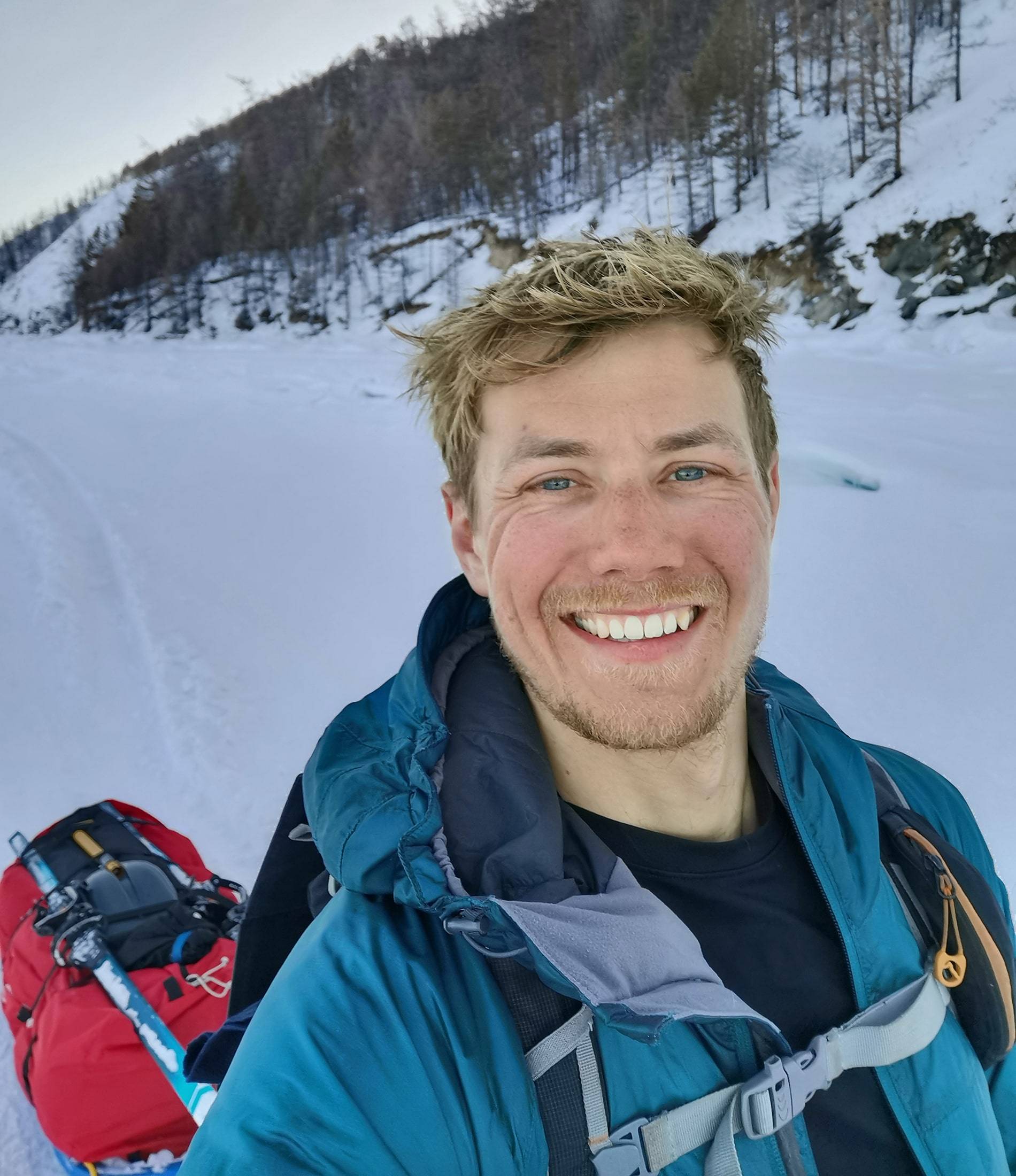
About Oli France
Oli is an adventurer, speaker and expedition leader. He has led teams in some of the world's wildest places, from Iraq to Congo, Yemen to Somalia, Syria to Kyrgyzstan, across more than 75 countries. He is a Fellow of the Royal Geographical Society, a Member of the Scientific Exploration Society and a Winter Mountain Leader with a degree in Outdoor Leadership (BA).
He is currently focused on The Ultimate Seven project, a world - first endeavour to journey from the lowest altitude in each continent to the highest summit, entirely by human - power.

